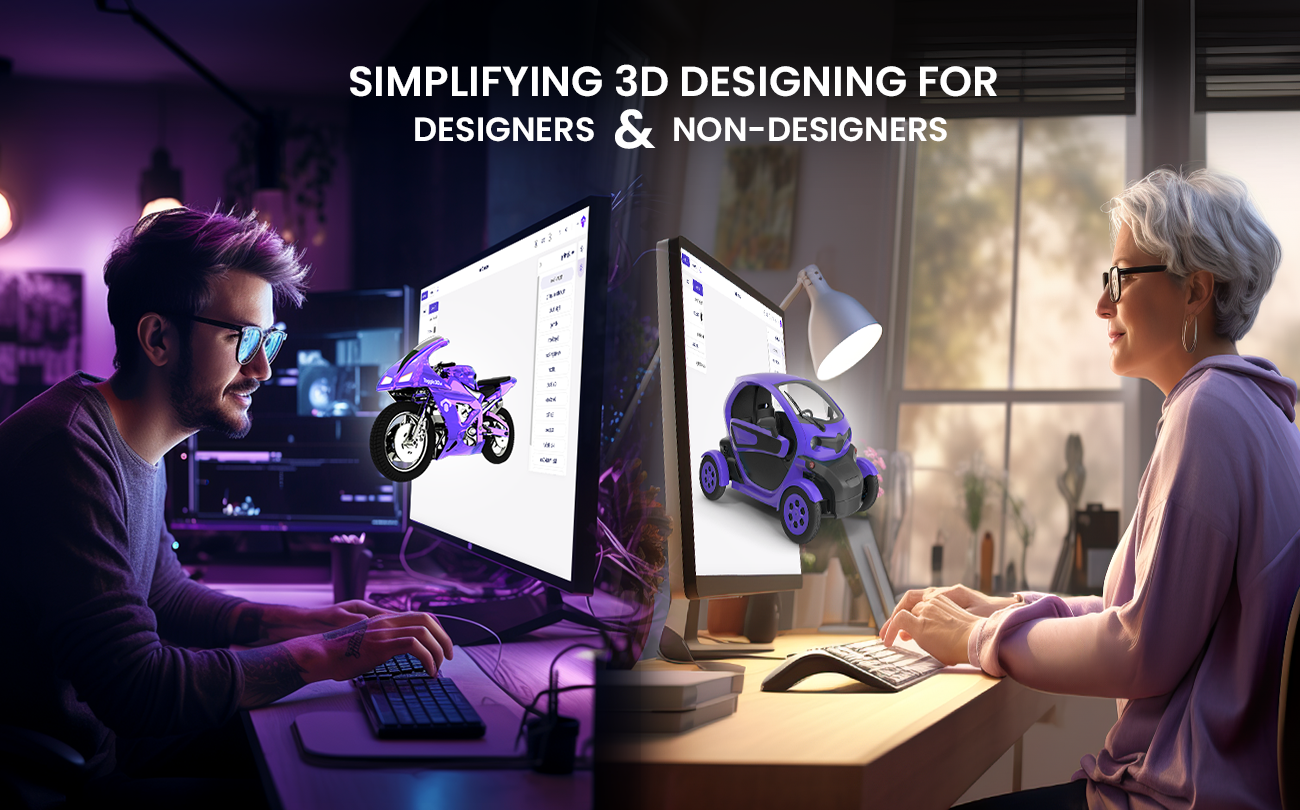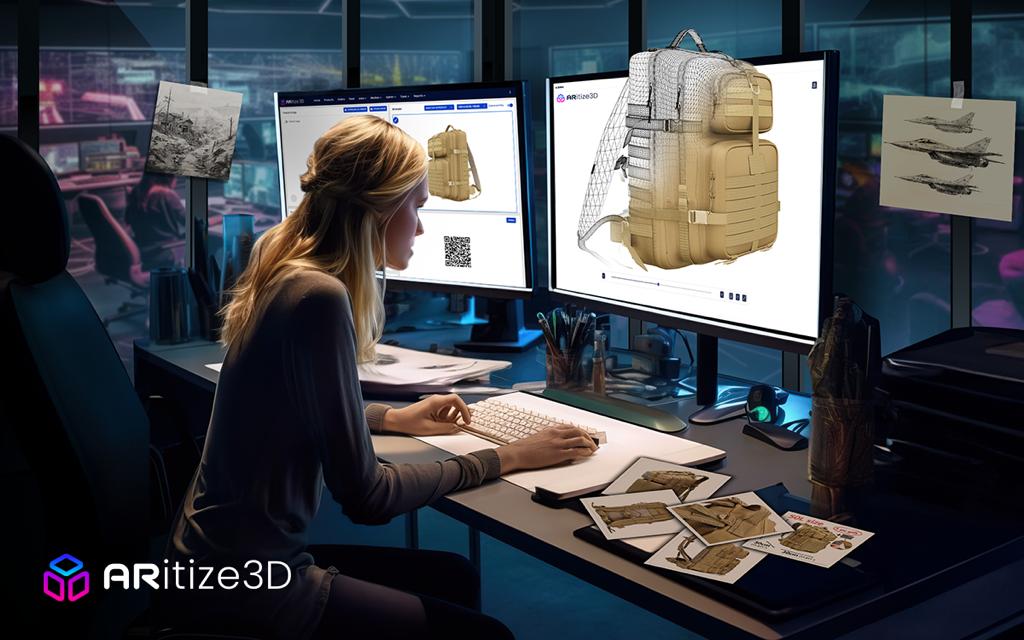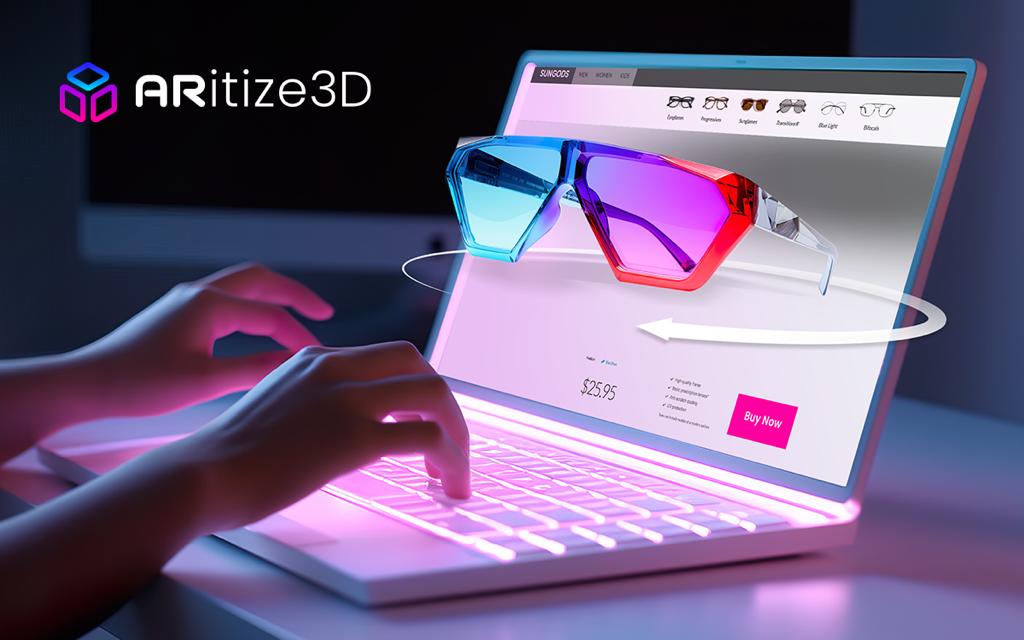Until the advent of Toggle3D, 3D designing has always been a skill to be learned. Companies have had to assemble entire teams for 3D designing – which involves the complicated tasks of 3D texturing and converting their files into web-friendly formats. However, by tapping into the immense potential of cutting-edge AI technology, Toggle3D.ai has developed and launched a 3D design studio - Toggle3D. This innovative SaaS product makes the whole process easy enough for teams, skilled individuals, and anyone with no prior 3D design training to pull off 3D designing like a pro!
Sounds too good to be true? Well, it isn't! Toggle3D is disrupting the field of traditional 3D product design, much like ChatGPT, Midjourney, and Stable Diffusion have revolutionized the way we create content and graphics—just another example of AI making our workflow simpler and quicker.
To understand how this web-based 3D design software is making the lives of designers easier and making 3D design accessible to all creators, let’s first understand the conventional way a 3D model design is developed without AI.
What Is The Traditional 3D Designing Process?
Here are the usual steps taken by skilled 3D design professionals to create high-quality, web-friendly 3D models:
1. Collection of the resources necessary for reference
To create a photo-realistic 3D design, 3D designers require resources like the actual object/product to be designed, along with a 3D scanner – or photos or CAD/STEP/STL files of the object/product. In addition to that, they need physical samples of the required surfaces to be scanned and applied digitally to the 3D design. Stock materials with accurate textures available in software or online libraries can also work. Otherwise, trained 3D texturing artists must recreate digital versions of the required material, which is a long and complicated process.
2. Geometrical creation of the 3D model
The method of 3D model design is determined by the types of resources available for reference. 3D modelers can scan the real-world object/product or import photos or CAD/STEP/STL files into their 3D design software to accurately recreate the object’s geometrical structure in the digital medium. This process usually requires photogrammetry tools that match the points of reference on the actual object or its photos to a virtual system of coordinates and then stitch them with a polygonal mesh. Designing the 3D model from scratch is possible, but it is a time-consuming and error-prone route that requires detailed object descriptions. When a geometrical 3D model is developed, modeling artists add contours for framework refinement to ensure it closely resembles the real object.
3. Addition of surface properties to the 3D model
Surface properties like colors, shades, materials, textures and finishes must be added to a geometrical 3D model to make it look like a real object on a digital screen. Trained 3D texturing artists are usually contracted to apply surface properties to the generated 3D models. The process involves UV mapping or unwrapping, 3D texturing and shading. Let’s understand these in detail -
a) What is UV mapping?
UV mapping or unwrapping involves creating a 2D representation of the 3D model, called a UV map.
b) What is 3D texturing and shading?
3D texturing and shading is the process in which texturing artists add appropriate surface properties to the UV map of a 3D model.
Once again, the resources available for reference determine the ideal method of 3D texture design.
4. Lighting and rendering
3D lighting is necessary to make the virtual 3D object look realistic by giving it the shine and shadows of a real-world object. Once a backdrop is added and the 3D object is lit, it is ready to be rendered and then exported in an AR and web-friendly file format, which can be seamlessly integrated into digital platforms like websites and mobile apps for easy virtual viewing. This conversion of the file format usually requires additional software that is specifically designed for this function.
How Does Toggle3D.ai’s 3D Design Software Make 3D Designing Easier?
By harnessing the power of AI!
Using AI technology, Toggle3D enables even a layperson to execute all the steps required for 3D designing, like CAD-to-3D conversion, UV unwrapping, 3D texturing, lighting and publishing of web-friendly AR models, through its intuitive studio by simply letting you point and click on the required materials, textures and lighting presets.
Here is the simple 3D designing process with Toggle3D, broken down into steps:
1. Import a CAD file to Toggle3D. The platform automatically switches the file format from CAD to web-friendly 3D up to 95% lighter.
2. Directly apply surface properties to the 3D model by either:
-
Selecting them from the 1000+ PBR materials available in 4K on the platform’s pre-built library
-
Or generating your own PBR materials by uploading photos of real surfaces and creating their digital versions with one swift click
-
Or providing text prompts as input, and Toggle3D’s AI will generate the material for you
3. Add lighting presets from the pre-built library and share the final 3D design over the web with anyone.
Every 3D design exported from Toggle3D has an AR/web-friendly file format with a unique QR code enabling it to be viewed in augmented reality using just the camera of a regular smartphone.
The Major Problems in 3D Designing Solved by Toggle3D
Toggle3D is a 3D design studio built for productivity. Toggle3D effortlessly eliminates some of the biggest challenges in the conventional 3D design process. Let’s have a look at some of them:
1. The Enormous Amount of Expenses
Toggle3D is a highly cost-effective alternative to not just one but several different software required in the 3D design workflow. It also eliminates hiring additional resources for the 3D texture design process.
2. Time Consumption at Various Stages
The conventional process of 3D designing consists of several steps that take long periods of time to complete. Toggle3D taps into the power of AI to eliminate many of these steps. Thanks to AI, jobs like CAD-to-lightweight 3D conversion, UV mapping and 3D texturing are done faster than ever.
3. Complicated File Conversions
Conventionally, up to 6 different platforms are required to convert a heavy CAD file into a web-friendly format. But with the help of AI technology, a Toggle3D user can do it with the click of a button.
4. Storage Space
The projects you start on Toggle3D are saved on a cloud. Therefore, they don’t unnecessarily occupy hundreds of GB on your device.
5. The Need for Manual UV Mapping
In the conventional process, creating UV maps is a skilled and time-consuming job for a dedicated 3D texturing artist.
Toggle3D eliminates the need for users to manually create a UV map of the 3D model before adding surface properties. The AI of the 3D design studio seamlessly manages that process.
6. The Tedious Procedure to Create 3D Textures
With Toggle3D, you don’t need a 3D texturing artist, a separate 3D texturing tool and a 3D scanner to create new, high-quality textures from scratch. All you have to do is select the material you wish to add from its prebuilt library or, upload a photo of a real-world surface or provide a text prompt as the input. The AI in Toggle3D then proceeds to create a photo-realistic PBR material that can be directly applied to the 3D model.
7. Hassles in Sharing Designs
Various stakeholders usually review product design projects and provide feedback. This isn't easy in the conventional design process, as multiple platforms and file conversions are involved. Toggle3D makes it easy to share your design with various people with just a click.
8. Steep Learning Curves
Becoming proficient in conventional 3D design tools requires months of training and experience. Toggle3D has a highly intuitive interface and leaves all the complicated technical tasks to AI. So, the learning curve is almost flat.
9. Lack of Marketing Applications
The 3D models designed conventionally are not fit to be directly used for marketing content. However, marketers can easily use Toggle3D to add brand colors and logos to a 3D product design and integrate it into digital ads and e-commerce websites. When using Toggle3D for marketing, the sky’s the limit!
All these features make Toggle3D a highly cost-effective, fast, convenient and scalable solution for 3D designing.
Who Should Use Toggle3D for 3D Designing?
Toggle3D is a 3D design studio for anyone who could benefit from photo-realistic 3D designs of products. Therefore, it can be a life-changing upgrade for professionals like 3D artists, product designers, graphic designers, game designers, interior designers, landscape artists and digital marketers working alone or in small or large companies.
Begin Your Easy 3D Designing Journey With Toggle3D
Click here to sign up for Toggle3D and fast-track your productivity in 3D design in a way that was never possible before. Users can convert, texture, customize and share high-quality 3D product experiences using the web-based 3D design software in a matter of minutes without any coding at all. With Toggle3D’s technological breakthroughs, you don’t have to upskill for a better 3D design workflow – you only have to upgrade or ‘toggle’ to one.








